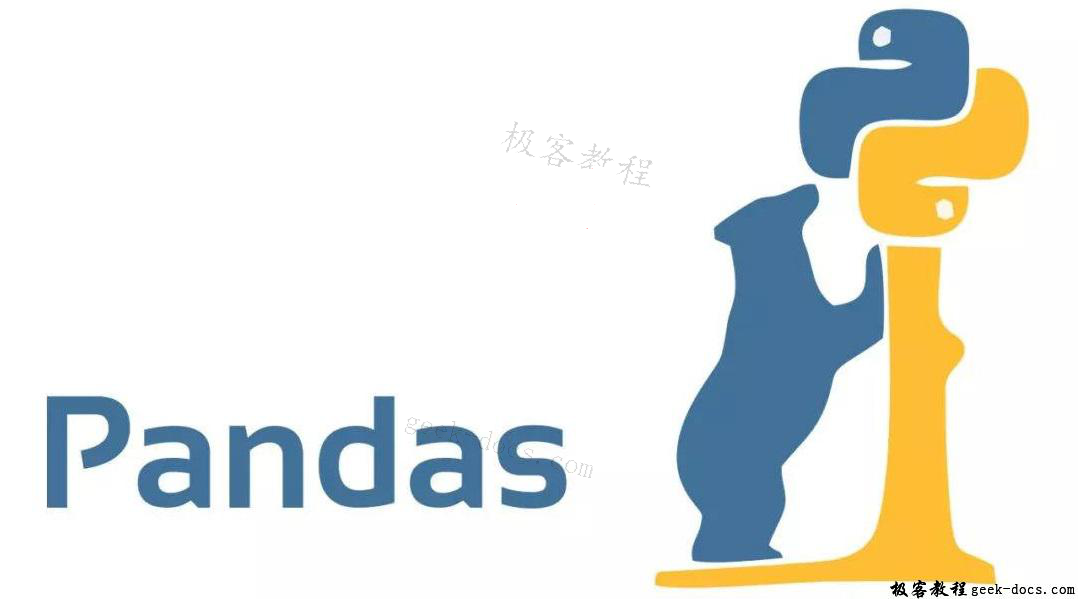Pandas DataFrame 读取 添加和删除,上文介绍了如何创建 DataFrame,本章介绍如何对 Pandas.DataFrame 进行读取,添加和删除。

DataFrame 读取列
下面将从数据帧(DataFrame)中读取一列。
import pandas as pd
d = {'one' : pd.Series([1, 2, 3], index=['a', 'b', 'c']),
'two' : pd.Series([1, 2, 3, 4], index=['a', 'b', 'c', 'd'])}
df = pd.DataFrame(d)
print (df['one'])
执行结果如下:
a 1.0
b 2.0
c 3.0
d NaN
Name: one, dtype: float64
DataFrame 添加列
下面演示如何向一个 DataFrame 中添加一个新列
import pandas as pd
d = {'one' : pd.Series([1, 2, 3], index=['a', 'b', 'c']),
'two' : pd.Series([1, 2, 3, 4], index=['a', 'b', 'c', 'd'])}
df = pd.DataFrame(d)
# Adding a new column to an existing DataFrame object with column label by passing new series
print ("Adding a new column by passing as Series:")
df['three']=pd.Series([10,20,30],index=['a','b','c'])
print (df)
print ("Adding a new column using the existing columns in DataFrame:")
df['four']=df['one']+df['three']
print (df)
执行结果如下:
Adding a new column by passing as Series:
one two three
a 1.0 1 10.0
b 2.0 2 20.0
c 3.0 3 30.0
d NaN 4 NaN
Adding a new column using the existing columns in DataFrame:
one two three four
a 1.0 1 10.0 11.0
b 2.0 2 20.0 22.0
c 3.0 3 30.0 33.0
d NaN 4 NaN NaN
DataFrame 删除列
下面演示 DataFrame 中如何删除或弹出一列
# Using the previous DataFrame, we will delete a column
# using del function
import pandas as pd
d = {'one' : pd.Series([1, 2, 3], index=['a', 'b', 'c']),
'two' : pd.Series([1, 2, 3, 4], index=['a', 'b', 'c', 'd']),
'three' : pd.Series([10,20,30], index=['a','b','c'])}
df = pd.DataFrame(d)
print ("Our dataframe is:")
print (df)
# using del function
print ("Deleting the first column using DEL function:")
del df['one']
print (df)
# using pop function
print ("Deleting another column using POP function:")
df.pop('two')
print (df)
执行结果如下:
Our dataframe is:
one three two
a 1.0 10.0 1
b 2.0 20.0 2
c 3.0 30.0 3
d NaN NaN 4
Deleting the first column using DEL function:
three two
a 10.0 1
b 20.0 2
c 30.0 3
d NaN 4
Deleting another column using POP function:
three
a 10.0
b 20.0
c 30.0
d NaN
DataFrame 读取行
按索引选择
可以通过将行索引传递给loc()函数来选择行
import pandas as pd
d = {'one' : pd.Series([1, 2, 3], index=['a', 'b', 'c']),
'two' : pd.Series([1, 2, 3, 4], index=['a', 'b', 'c', 'd'])}
df = pd.DataFrame(d)
print (df.loc['b'])
执行结果如下:
one 2.0
two 2.0
Name: b, dtype: float64
按位置选择
可以通过将整数位置传递给iloc()函数来选择行
import pandas as pd
d = {'one' : pd.Series([1, 2, 3], index=['a', 'b', 'c']),
'two' : pd.Series([1, 2, 3, 4], index=['a', 'b', 'c', 'd'])}
df = pd.DataFrame(d)
print (df.iloc[2])
执行结果如下:
one 3.0
two 3.0
Name: c, dtype: float64
按行切片选择
可以使用:运算符选择多行
import pandas as pd
d = {'one' : pd.Series([1, 2, 3], index=['a', 'b', 'c']),
'two' : pd.Series([1, 2, 3, 4], index=['a', 'b', 'c', 'd'])}
df = pd.DataFrame(d)
print (df[2:4])
执行结果如下:
one two
c 3.0 3
d NaN 4
DataFrame 添加行
使用append()函数将新行添加到 DataFrame
import pandas as pd
df = pd.DataFrame([[1, 2], [3, 4]], columns = ['a','b'])
df2 = pd.DataFrame([[5, 6], [7, 8]], columns = ['a','b'])
df = df.append(df2)
print (df)
执行结果如下:
a b
0 1 2
1 3 4
0 5 6
1 7 8
DataFrame 删除行
使用索引标签从 DataFrame 中删除行。 如果标签重复,则会删除多行。
import pandas as pd
df = pd.DataFrame([[1, 2], [3, 4]], columns = ['a','b'])
df2 = pd.DataFrame([[5, 6], [7, 8]], columns = ['a','b'])
df = df.append(df2)
# Drop rows with label 0
df = df.drop(0)
print (df)
执行结果如下:
a b
1 3 4
1 7 8
在上面的例子中,一共有两行被删除,因为这两行包含相同的标签
0。
 极客教程
极客教程